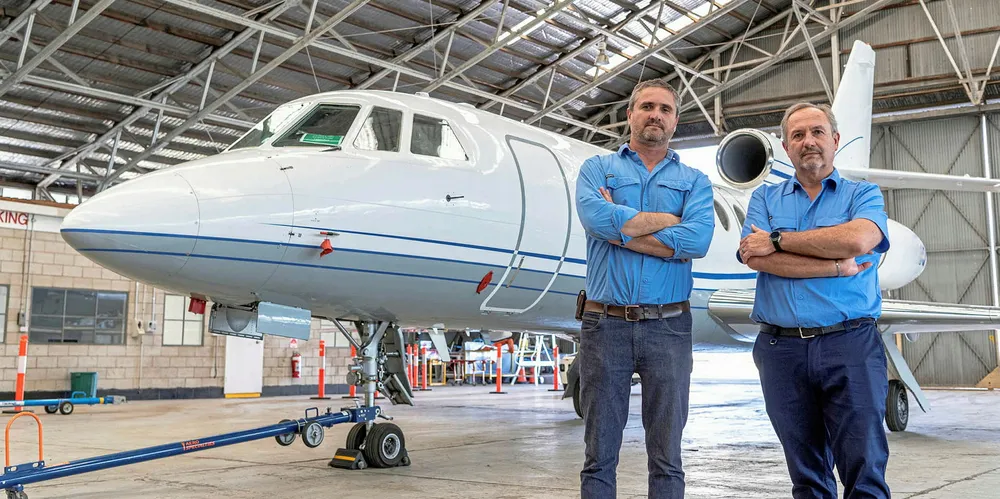Liquid ammonia is the ‘best route to carbon-free flight’, says hydrogen aviation start-up
Aviation H2 aims to have its first ammonia-powered aircraft in the sky by the middle of next year, but what about the NOx emissions?

Australian start-up Aviation H2 says that after a three-month feasibility study, it has concluded that the use of liquid ammonia in a turbofan engine is the “best route to carbon-free flight”.
The company, which claims to have a team of “world-renowned engineers”, says it will soon start modifying turbofan engines on a Dasault Falcon 50 private jet, with the aim of getting it in the air by “the middle of 2023”.
“By implementing this power path, Aviation H2 can fly aircraft with hydrogen fuel using significantly less weight than alternative power paths while generating the same amount of power,” said Aviation H2 director, Helmut Mayer.
“There are multiple reasons why liquid ammonia was selected. Chiefly its advantages include high gravimetric and volumetric hydrogen density that makes it lighter and easier to transport while providing a greater energy conversion rate.”
Liquid ammonia contains 11.5 megajoules of energy per litre, compared to 8.5MJ/l for liquid hydrogen and 4.5MJ/l for compressed hydrogen at 690 bar and 15°C.
“In fact, the stored weight of liquid ammonia energy is substantially lighter than gaseous hydrogen and can be kept at a much lower tank pressure.”
Mayer also points out that liquid ammonia has been handled and transported around the world for many years, making its use as “a carbon-free fuel even more appealing”.
He adds: “When liquid ammonia is used in the combustion chamber, a turbofan can produce the same amount of thrust as traditional fuel sources.”
Aviation H2 suggests that adding pure ammonia to the outgoing post-combustion exhaust gas in a “second burn” will reduce NOx emissions, by turning at least some of the nitrous oxides into nitrogen and water, but the company has not yet offered details on this issue.
In January, NASA made a $10m grant to researchers at the University of Central Florida to develop ammonia-powered jet engines, with co-operation from Boeing, although that research is taking a slightly different approach to Aviation H2.
Aviation H2 says that modifying existing aircraft will be a lot more cost-effective than developing new fleets.
“Once the test flight is successful in the middle of 2023, Aviation H2 will have a patentable method for modifying aircraft so they operate on carbon-free fuel,” the company said. “They [sic] will quickly seek to certify and commercialise this product via a planned public listing on a major exchange in Q4 of 2023.”
(Copyright)